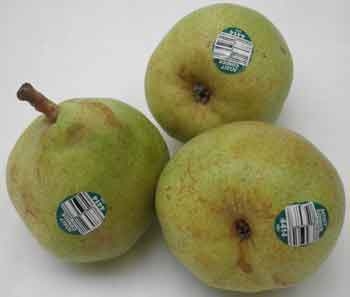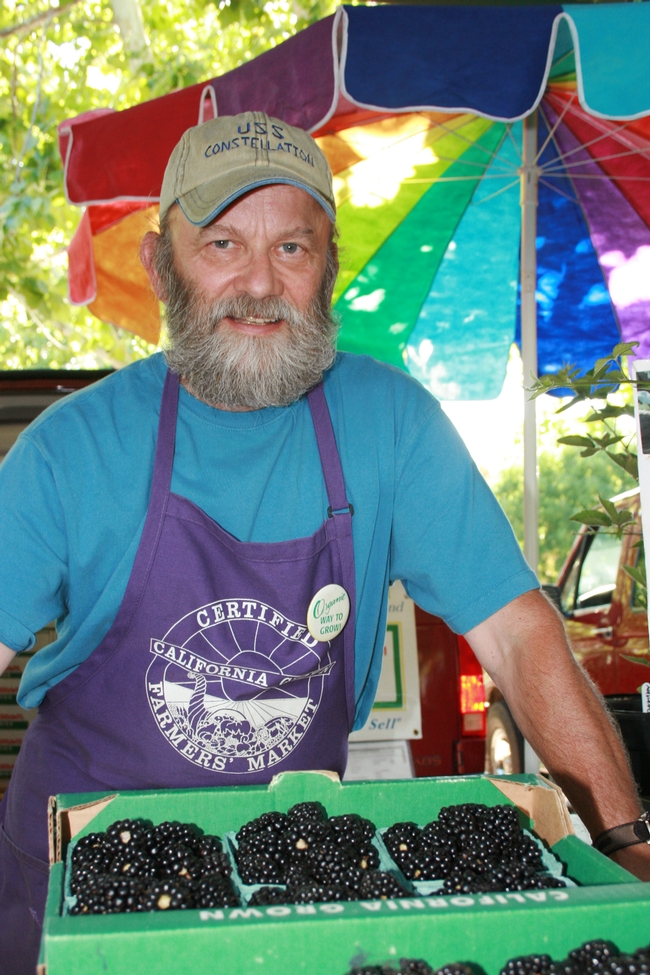Posts Tagged: marketing
California's delicious harvest season unfolds
Early spring can be an invigorating time of year, with lengthening days, blooming daffodils and fruit trees (and ski season still in full force). One of the best perks of the season is the availability of luscious strawberries, and tasty artichokes and asparagus picked from nearby farms, with flavor quality and price that reflects both in-season and local transportation benefits.
Depending on your location, farmers markets and pick-your-own farms will begin offering their wares within the next month or two. There are over 700 farmers markets in California. A wide variety of produce, from the exotic to the humble every-day variety, is available to entice you with its fresh beauty. We here in the West spend more annually on fresh produce at $511 vs. the national average of $429, wrote Roberta Cook, UC Cooperative Extension specialist in the UC Davis Department of Agriculture and Resource Economics, in “Eye on Economics: Much more than Dollars and Cents. Cook states that, “California produces half of the nation’s fresh fruits and vegetables and consumers here are privileged to have an abundance of high quality fresh produce over extended seasons due to California’s Mediterranean climate.”
Elsewhere in the United States “local” food markets are much less developed due to climate restrictions that limit production to a brief period in the summer and early fall; and the variety of products grown is only a fraction of the over 200 crops grown in California. While “local” production represents a rapidly growing share of U.S. agricultural sales, with direct-to-consumer sales more than quadrupling in the past decade, outside of California the share is still tiny.
There are few things as disappointing as biting into a piece of fruit that looks beautiful on the outside but just doesn’t deliver that burst of flavor, or cutting into a nice-looking vegetable only to find an unsightly defect inside. When I’m prowling through a display of fresh produce, I rev up all my senses into high gear and get up-close and personal with the fruit and veggie items on my list. I get busy feeling the weight-to-size ratio, gently (not too hard, mind you, or you’ll get a bad reputation with other shoppers) pressing to feel for firmness, looking at color, form, and stem separation area, and smelling the aroma. All of these things, and more, help provide clues about the quality inside.
Country of Origin Labeling (COOL) and Price Look Up (PLU) stickers
Other clues are often available about where and how your produce items were grown. For instance, in 2009 rules (affecting retail grocers) were adopted by the USDA mandating country of origin labeling (COOL), which required that retailers notify customers of the country of origin of all perishable agricultural commodities. Also offering insights into your produce selection is the Price Look Up sticker. Created by the Produce Marketing Association (PMA) in 1987 to create a standardized system to assist check-out clerks with looking up the produce items, it also indicates additional information such as whether it’s organic.
For instance, if your produce item’s sticker has a 4 digit code, it is “conventionally grown, but not organic.” If the code has 5 digits, and the first digit is a 9, the produce was organically grown. Usually the PLU stickers also include the country of origin in writing, but if not, this information should be displayed on the packing box or other store signage. Conventionally grown produce is recognized by scientists and regulators to be just as safe as organically grown and there is no evidence that it is worse for the environment. About 95 percent of retail fresh produce sales are conventionally grown and generally cost about 30 percent less than organics.
There are a number of resources that can help produce shoppers improve their savvy shopping skills:
From the Farm to Your Table: A Consumer’s Guide to Fresh Fruits and Vegetables, by James Thompson and Adel Kader. This 16-page booklet offers information on measuring quality; farm-based growing conditions, practices and harvesting; handling, transportation and storage; and selecting and storing good-quality produce for use at home. The table on how to select good-quality produce is especially helpful. ($7.00/copy)
Shopping for Fruits & Vegetables at the Fruits and Veggies: More Matters web site
Storing Fresh Fruit and Vegetables for Better Taste, a free downloadable poster from the UC Davis Postharvest Technology Center
i know produce, a comprehensive produce website developed by the Produce Marketing Association (PMA) that includes photo identification, written description, availability by location, nutrition information, storage/handling, and tips.
One more way to 'know your farmer'
A ranch dog "friended" me on Facebook the other day. Yep, a dog on Facebook. To be specific, this is a working dog on a ranch that produces meat and sells it directly to consumers like me.
Apparently when Suki isn't herding cows at Scott River Ranch, she's surfing the web.
And exactly how is a ranch dog on Facebook related to food?
More and more people are interested in connecting with farmers and ranchers who produce the food we eat.
If you buy fresh produce at a farmers market, you can also ask farmers (or their employees) questions about which variety is ripest right now, how the produce was grown, how the meat was processed, and what the farm is like. Proactive eaters can sign up for CSA harvest boxes to receive seasonal produce, know exactly who is growing their food, and pledge support to a particular farm or group of farms. We can visit farms to participate in agritourism by buying from farm stands, taking ranch tours and even getting into the fields to harvest "U-pick" berries and other fruit.
"Local is hot" was on one of the opening slides of Kathleen Merrigan's presentation at UC Davis last week. The USDA's deputy secretary was visiting campuses to discuss the agency's "Know Your Farmer, Know Your Food" campaign, which focuses on local and regional food system support.
And now we have another way to know a farmer, without even leaving the office: Anyone can like their favorite farmers on Facebook, follow them on Twitter, subscribe to their blogs, sign up for their email newsletters, and more.
Hearing about Suki the ranch dog's antics, with photos of her bathing in a water trough or videos of her chasing a field's pivot sprinklers, is another way for consumers to get a glimpse of ranch life from behind the scenes. Likewise, hearing from a farmer on Facebook about how today's rain might affect the cherry harvest is another way for me to feel connected with the farmer who is raising food I will soon be eating.
Chris Kerston of Chaffin Orchards put it this way: "If I'm walking along the field and I see a weird-looking bug, I'm going to stop, take a picture of it with my phone, put it on Facebook and ask 'Anyone know what this weird bug is?' ... It's just another way for people to see what it's like out on the farm."
Don't take it just from me: National companies are taking notice too. This month the editorial board of The Packer, a newspaper that specializes in the fresh produce industry, suggested that local is also about something else:
"While some national suppliers may look skeptically at the buy local trend, a component of local is consumers’ need to connect with where their food comes from.
"Social media is often the solution."
You can connect with the farmers and ranchers who produce your food — whether you buy it at a farmers market or in a supermarket — and receive updates from the farm or ranch through social media.
You can start by asking your favorite farmers or ranchers if they're on Facebook, and here are a few other networks for finding farmers online:
- Know A California Farmer is a website that shares updates, blog posts and videos from participating farmers and ranchers.
- Find farms near you with the Local Harvest directory and see if they are online too.
- I also maintain a list of California farmers and ranchers on Twitter.
Join the discussion: So, what would you like to know from the people who grow and raise the food you eat?
Bonus video: Connecting with social media goes both ways; farmers want to connect with consumers who buy and eat their products. Staff and academics with UC Cooperative Extension and UC Davis have offered social media workshops to help farmers connect with consumers online (next one for me will be in Marin County, June 1). Here's a video after one UC workshop a few months ago:





